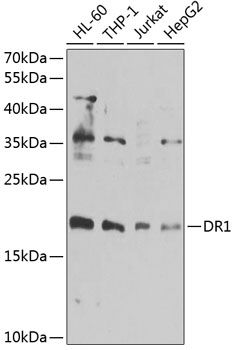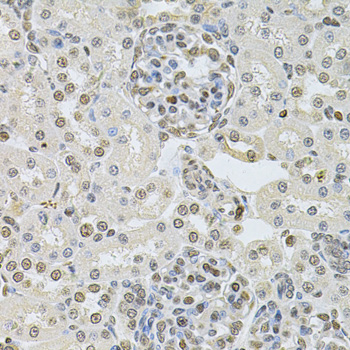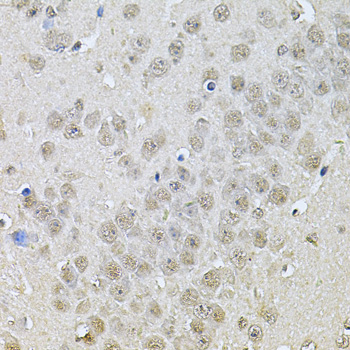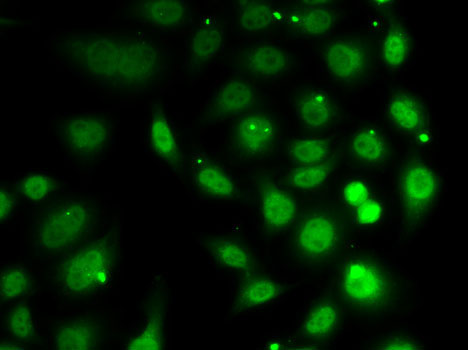-
Product Name
DR1 Polyclonal Antibody
- Documents
-
Description
Polyclonal antibody to DR1
-
Tested applications
WB, IHC, IF
-
Species reactivity
Human, Mouse, Rat
-
Alternative names
DR1 antibody; NC2 antibody; NC2-BETA antibody; NC2B antibody; NCB2 antibody; protein Dr1 antibody
-
Isotype
Rabbit IgG
-
Preparation
Antigen: Recombinant fusion protein containing a sequence corresponding to amino acids 1-176 of human DR1 (NP_001929.1).
-
Clonality
Polyclonal
-
Formulation
PBS with 0.02% sodium azide, 50% glycerol, pH7.3.
-
Storage instructions
Store at -20℃. Avoid freeze / thaw cycles.
-
Applications
WB 1:500 - 1:2000
IHC 1:50 - 1:200
IF 1:50 - 1:200 -
Validations

Western blot - DR1 Polyclonal Antibody
Western blot analysis of extracts of various cell lines, using DR1 antibody at 1:1000 dilution.Secondary antibody: HRP Goat Anti-Rabbit IgG (H+L) at 1:10000 dilution.Lysates/proteins: 25ug per lane.Blocking buffer: 3% nonfat dry milk in TBST.Detection: ECL Basic Kit .Exposure time: 30s.

Immunohistochemistry - DR1 Polyclonal Antibody
Immunohistochemistry of paraffin-embedded rat kidney using DR1 Antibody at dilution of 1:100 (40x lens).

Immunohistochemistry - DR1 Polyclonal Antibody
Immunohistochemistry of paraffin-embedded mouse brain using DR1 Antibody at dilution of 1:100 (40x lens).

Immunofluorescence - DR1 Polyclonal Antibody
Immunofluorescence analysis of MCF7 cells using DR1 antibody .
-
Background
The association of the DR1/DRAP1 heterodimer with TBP results in a functional repression of both activated and basal transcription of class II genes. This interaction precludes the formation of a transcription-competent complex by inhibiting the association of TFIIA and/or TFIIB with TBP. Can bind to DNA on its own. Component of the ATAC complex, a complex with histone acetyltransferase activity on histones H3 and H4.
Related Products / Services
Please note: All products are "FOR RESEARCH USE ONLY AND ARE NOT INTENDED FOR DIAGNOSTIC OR THERAPEUTIC USE"
